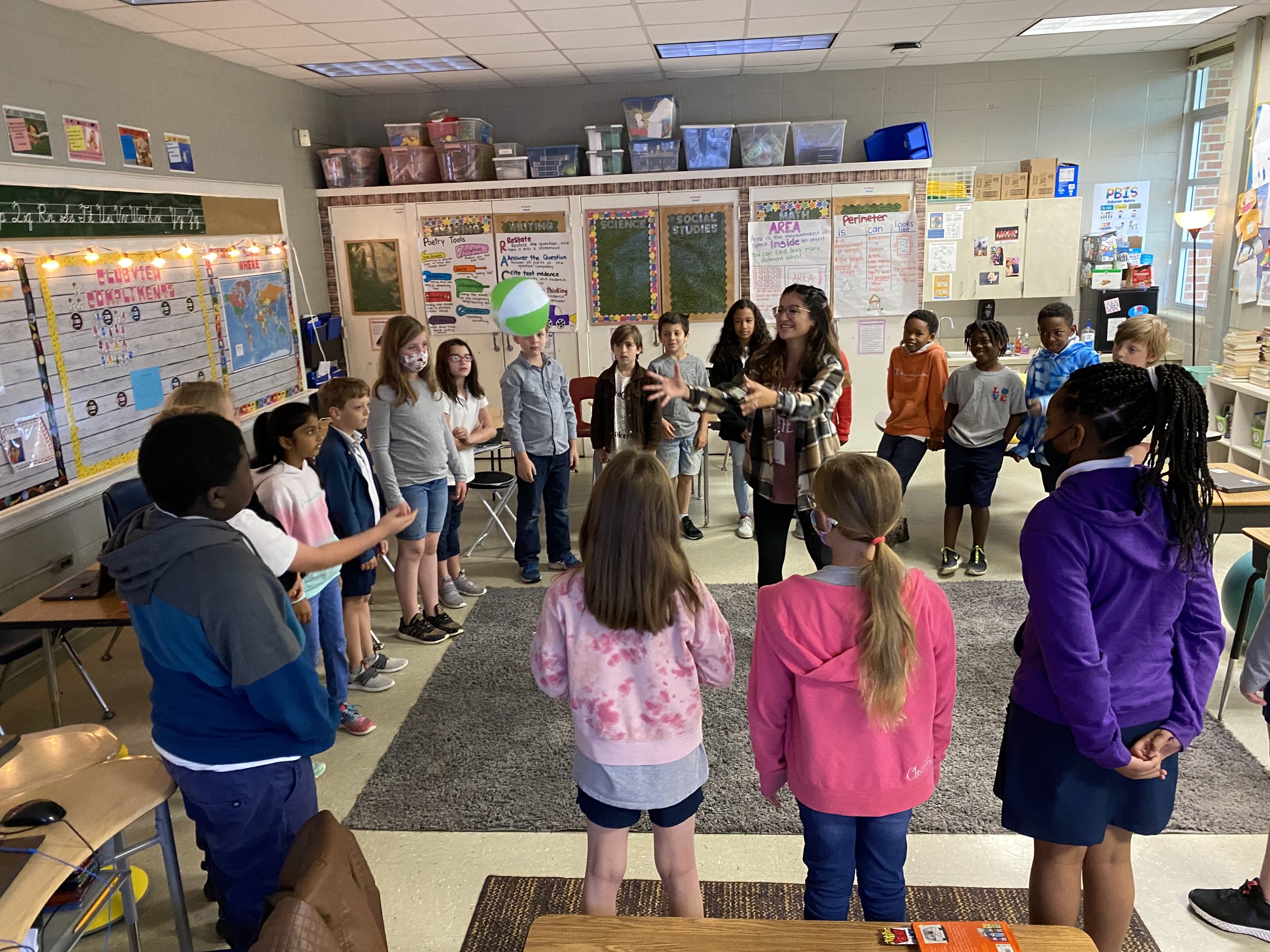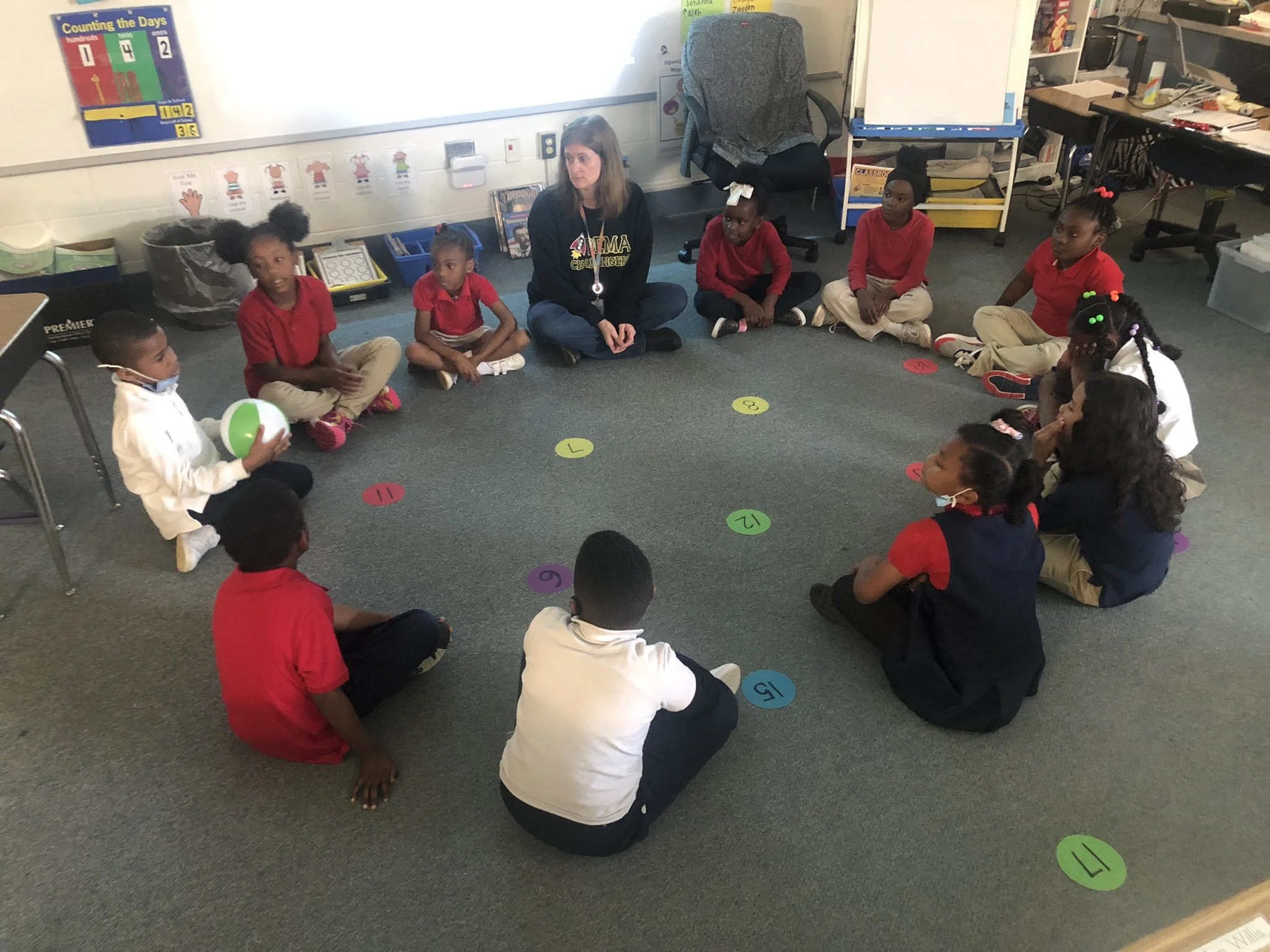Can I Use Arts Integration Strategies for Classroom Management? Absolutely!
Try this engaging creative teaching activity to start the year off with classroom management success!
Boy, oh boy, have we been there. That first week of school creeps up, and you’re ready! Well, almost. You’ve thought about your lessons, your seating chart, and how you’ll welcome students into the classroom on the first day…but there’s a sinking feeling in your stomach.
Boom. It hits you. What about classroom management?! Maybe you’ve got a tried and true system in place, but it needs some tweaking for a new generation of students? Maybe you like to adapt things to meet the needs of every new class? Maybe you’re just gonna wing it?
Well, dear teacher, you are not alone. Those first few weeks are key to setting up your classroom for success throughout the year (I can see you nodding your head right now — you know this). We hear this from teachers all the time:
How can I teach rules and procedures in an engaging way?
Can I activate learning about our classroom rituals?
There is so much for students to remember during that first week. What can I do to help them retain ALL my rules and expectations?
How do I best set my kids up for success?
If you’ve ever asked yourself these questions, you’re in the right place. For us, and many more teachers like you, the answer is arts integration — using fine arts standards to activate the learning process for students.
The benefits of using arts integration to teach your classroom management rules and policies are many. They include:
Encouraging students to demonstrate understanding in a variety of ways
Providing an opportunity for activated learning
Building peer and teacher/student relationships
Increasing student engagement and confidence as they learn
Putting the FUN in classroom FUNdamentals (sorry, I couldn’t help myself…but it is also true!)
And more!
New to arts integration strategies, but curious enough to give it a try? That’s great! In fact, that’s exactly why we wrote this blog - for you, you brave and curious teacher.
Read on for a friendly, focused, and adaptable arts integration strategy that will help your students learn (and enjoy learning) your classroom management rules and procedures.
*Please note, the PAIR Program currently serves educators in Georgia, so the standards listed here reflect Georgia Standards of Excellence but these activities can be adapted to any classroom.
Using Drama to Teach Rules and Procedures - Grades K-5 CAPTAIN’S COMING!
Standards Addressed
(Drama) TAESK.3 Acting by developing, communicating and sustaining roles within a variety of situations and environments
a. Uses voice to communicate ideas and emotions
b. Uses body to communicate ideas and emotions
c. Uses imagination to create, revise or add to ideas
d. Collaborates and cooperates in theatre experiences
e. Demonstrates skills of the mind: imagination, focusing, and concentration.
*Please note, this is a Kindergarten standard, but a version of this standard exists for grades K through 5, making this activity applicable to all elementary grade levels.
Teacher Preparation
Teachers should have an understanding of the game Captain’s Coming and should be prepared to adapt the call and response action of the game to the teacher’s own rules and procedures.
Student Preparation
None.
Instruction
Introduce classroom rules and procedures.
Go over five of the most important rules for your classroom. It could be appropriate noise level, how to line up, cues to pay attention, certain areas of the classroom that are designated for different activities, how to politely get your attention, how to treat peers, how to treat the space…whatever is important to keeping your classroom orderly, safe, and on task, feel free to address it here.
Introduce your version of Captain’s Coming.
Captain’s Coming is a call and response-style game in which the teacher becomes the Captain and the students become the ship’s crew. The Captain calls out commands and the crew members must follow the directions. Some examples:
If the Captain says, “Captain’s coming!” the crew must face the captain, salute, and say “Aye! Aye!”
If the Captain says, “Swab the deck!” the crew should pantomime cleaning the “deck,” or the floor of the classroom. Students could pretend to mop, scrub with a brush on their hands and knees, or sweep.
If the Captain says, “Climb the rigging!” the crew should pantomime pulling the ropes attached to the sails of a pirate ship.
If the Captain says, “Shark!” the crew will transform into sharks with a fin on their heads and start to “swim” and “chomp.”
The important thing to remember is that there are no wrong answers, and you can adapt this to your students and needs. You could introduce your rules as pirates, or you could change themes and become robots, animals at the zoo, athletes, kings and queens, pop stars, etc. You could even use your school mascot to build up school spirit! Once you’ve decided on a theme, (let’s say it’s “Robots at the Ready”), you will construct some call and response actions or phrases your students will need to repeat based on your rules.
Establish yourself as the head Robot, or Zookeeper, or Captain, etc., and then have students stand quietly beside their desks. Teach them five call and response actions and/or phrases relating to your classroom rules and procedures. They could look like this:
A visual cue from the “head Robot” to line up, and the class moves to the line safely and quietly, but also as robots.
A phrase like “Reading groups assemble!” cues the robots to move quickly and quietly to a designated reading group area, but again, like robots.
A noise reminder call and response. Many teachers use some variation of clapping to get students’ attention. This is a great opportunity to teach that call and response, but encourage them to respond as robots. How is a robot clap different from a human clap? Maybe robots use different “claps” like snaps?
You could also practice how students interact with the room. Maybe something like, “Robots manage backpacks!” to teach students how to get backpacks at the end of the day safely and orderly.
Throw something fun in there, too. Maybe, “Robots, dance!” and play a little music for fun, or “Robots make a new friend!” and give robots a greeting to give to a nearby peer.
Practice these call and response actions and phrases until students have the hang of it.
Now it’s time to play.
Remind students of expectations and boundaries. Start with a story about the robots, pirates, zoo animals, etc., and their mission.
It doesn’t have to be amazing — just a quick something to set the tone.
And play! Offer gentle reminders and redirects, as needed. If a student isn’t grasping the concept or purposefully acting out, ask them to step out of the action, watch for a bit, and let you know when they’re ready to participate again. Make sure to praise students who are listening and responding appropriately. Repeat as many times as you like, or add new commands as students are ready.
Reflect.
After you’ve had your robot, pirate, or zoo animal fun, have students sit again and reflect. Some reflection questions to consider:
Think like a student:
Why do we have rules in a classroom? How do they help us?Think like an actor:
Was it easy to move around the classroom like a robot? How did we move our bodies to show character? How do you think actors listen and respond onstage?Think like a teammate:
Why is it important to greet each other kindly? Why should we be aware of classmates during activities?
Try again as students.
Have students stand again to play, but this time you are a teacher and they are themselves. They should be able to meet your expectations about moving around the room, using a quiet signal, and showing kindness to classmates — whatever you have chosen to focus on in the activity.
The great thing about Captain’s Coming (and many other arts integration activities and strategies) is that it can be adapted to other lessons throughout the year, or used as a fun refresher when students need that mid-year rules boost.
You can always add to this activity or change it up (learning about American Heroes? Try changing Captain’s Coming to Helping Heroes and give a call and response for each hero you learn about in the unit!)
Are your students ready for a more advanced challenge? Have them create the responses in small groups and teach their peers. have them explain why they chose that particular movement or sound and how it represents the "call." There are lots of actionable possibilities that promote learning, joy, focus, and confidence.
Ready to work with the PAIR team to become an arts integration powerhouse in your classroom? Send us a message to find out more about how we can support your strategies for classroom management and arts integration goals!
We hope you have a great school year — the best one yet!




